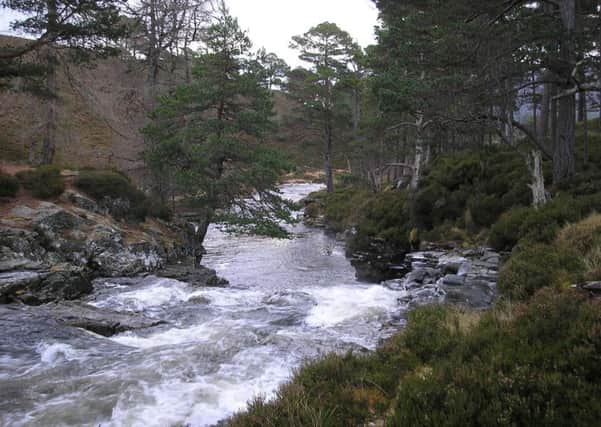Call to fell alien trees to protect native Scots pine


A new study by scientists from Scotland’s Rural College (SRUC) and the University of Edinburgh (UoE) has shown that Scottish pine species have a higher risk of becoming infected when Corsican pines from Europe and lodgepole pines from North America are planted near to them.
Plant researcher Dr Peter Hoebe, from SRUC, and Professor Richard Ennos, an honorary fellow at the UoE, have found widespread planting of exotic species in dense forests has introduced new races of fungi and raised the danger of disease in indigenous pines.
Advertisement
Hide AdAdvertisement
Hide AdThey say these alien species should be removed from the vicinity of Caledonian pine populations and restrictions placed on movement of planting material to minimise the impact of afflictions such as Dothistroma needle blight, which is caused by a fungus.
Dr Hoebe said: “This extensive study involved collecting hundreds of needles from forests around Scotland.
“In many cases, needle blight itself doesn’t necessarily kill the trees, but the loss of needles affects the growth of mainly young pines.
“While introducing exotic species to Scotland can sound very appealing, there are distinct risks involved.
“Planting exotic species related to native species reduces rather than enhances the resilience of forests to pathogens.”
Dothistroma needle blight is caused by the fungus Dothistroma septosporum.
It is currently attacking forests throughout Scotland, with the greatest impact in the north and north-east.
The disease affects a large range of conifers, but especially pine.
Advertisement
Hide AdAdvertisement
Hide AdThe principal species currently infected in Scotland are Corsican, lodgepole and Scots pines.
The fungus affects the needles of the infected tree, which eventually drop off. This can continue year on year, gradually weakening the tree and significantly reducing timber yields. It can also eventually kill the tree.
Prof Ennos added: “Our extensive study sheds new light on the risks associated with the introduction of exotic species in general, and valuable insight into how the current needle blight outbreak might be better managed.”
Other diseases affecting forests in Scotland include Phytophthora ramorum, which is considered the biggest threat.
First found in Scottish plant nurseries in 2002 and in gardens and parks in 2007, it is now causing extensive damage and killing larch trees and other plants.
The worst-hit sites are in the west of Scotland, where wetter climate conditions are driving the spread.
It was found on Japanese larch at a site on the Craignish peninsula in western Scotland in 2010. A year later, further sites of infection were detected on Mull and at several locations in Dumfries and Galloway.
Since then the disease has spread to a number of new, relatively localised sites.
Advertisement
Hide AdAdvertisement
Hide AdThere is also Chalara dieback, a serious disease affecting ash trees. Also caused by a fungus, it causes leaf-loss and crown-dieback in affected trees, and is usually fatal.
It has caused widespread damage to ash populations across Europe, and was first discovered in the UK in a Buckinghamshire nursery in February 2012.
The latest research is part of the Protree project, under the Tree Health and Plant Biosecurity Initiative. Backers include the Biotechnology and Biological Sciences Research Council, the Scottish and UK governments, the Economic and Social Research Council, the Forestry Commission and the Natural Environment Research Council.